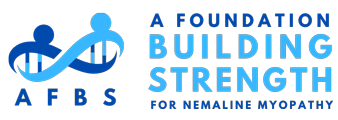Early Signs, Diagnosis, and Medical Complexities
Harneet Sandhu’s journey with Nemaline Myopathy (NM) began with early signs noticed by her mother when she was just three years old. “When I would fall while walking, I wouldn’t stand back up,” she recalls. Concerned, her mother sought medical advice, leading to a pivotal diagnosis of a muscular disorder. Subsequent medical complexities unfolded swiftly.
At three years old, Harneet underwent dental surgery, where she remained unconscious for three days due to an undiagnosed need for mechanical ventilation. This critical event underscored the urgency and complexity of her condition. Following further tests and procedures, including a muscle biopsy, Harneet received a definitive diagnosis of Nemaline Myopathy, specifically the NEB type.

Symptoms and Severity
Harneet’s journey with NM has been characterized by a progressive decline in muscle strength and function. Her respiratory muscles are severely weakened, necessitating constant ventilation through a tracheostomy and ventilator support.
Additionally, Harneet experiences weakness in her stomach and intestinal muscles, leading to difficulties in digesting food, ultimately requiring a gastro-jejunal feeding tube for nutritional support. These symptoms, coupled with the progressive nature of NEB-type NM, present ongoing challenges in Harneet’s daily life.
Challenges Beyond the Condition
While NM presents its own set of challenges, Harneet’s journey is compounded by the pervasive issue of ableism. “Dealing with the ableism that exists in the world” emerges as a significant hurdle, with instances of discrimination and misunderstanding shaping her experiences. “In university, I have had professors who viewed my accommodations as an advantage over other students,” she shares. “It is disappointing that even today, these are not uncommon situations.”
Misconceptions and Advocacy
One misconception Harneet is keen to address is the assumption that NM affects cognitive function. “NM does not affect the brain or intellectual abilities,” she clarifies, emphasizing the importance of understanding the distinct impact of the disorder. “I have had people assume that I am unable to engage in conversations,” she adds, recounting instances where individuals spoke to her mother about her in her presence. Through advocacy and education, she endeavors to challenge stereotypes and foster greater awareness.
Daily Life and Assistive Devices
Living with NM entails a reliance on assistive devices to navigate daily tasks. From a tracheostomy for respiratory support to a power wheelchair for mobility, each tool plays a vital role in enhancing Harneet’s independence and quality of life.
“Due to Nemaline Myopathy, I require care around the clock,” she explains. “My respiratory muscles are extremely weak, which means that I have a tracheostomy and use a ventilator 24/7, and because of this, I need a caregiver present in case I need to suction (clear the airway) or if my ventilator disconnects. I need assistance to use the bathroom, shower, get in and out of bed, etc.,” she says, “I use a power wheelchair to get around because I am unable to walk. I also have a gastro-jejunal feeding tube to help with nutrition because it is difficult for me to eat enough due to weak stomach muscles.” This constant need for support underscores the multifaceted nature of her needs and the essential role of assistive technology in her daily life.
Passions and Pursuits


Despite the obstacles she faces, Harneet remains steadfast in her pursuits, particularly in academia. A university student studying criminology, she is also passionate about fundraising for non-profit organizations near to her heart (including AFBS!). In her free time, she enjoys creative pursuits like arts and crafts, alongside cherished moments with her beloved pet, an adorable puppy named Mia.
Hope for the Future
Looking ahead, Harneet dreams of advancements in NM research and treatment. “I hope for treatments to help maintain muscle strength and slow progression to allow individuals with Nemaline Myopathy to live longer and have a better quality of life,” she shares, underscoring the collective desire for improved therapies and interventions. Her optimism serves as a beacon of resilience, illuminating the path towards a brighter future for individuals living with NM.
In Harneet Sandhu, we find a testament to the power of resilience and perseverance in the face of adversity. Her journey, marked by challenges and triumphs alike, serves as an inspiration.
This is the latest in our “Faces of NM” series, profiling some of the unique and diverse member of our NM community. To read more installments in this series, click here.

